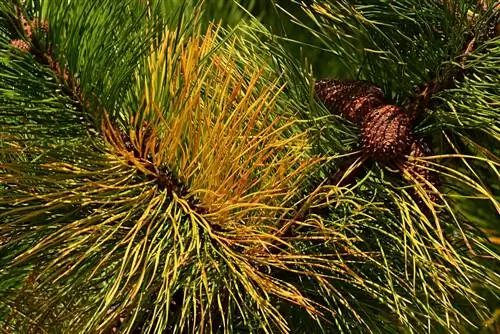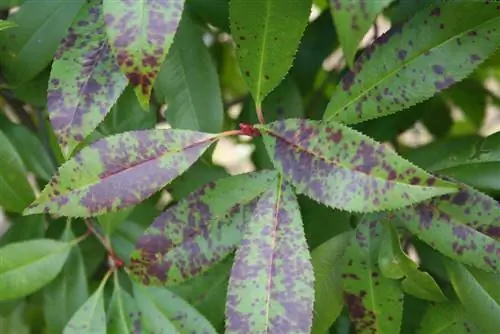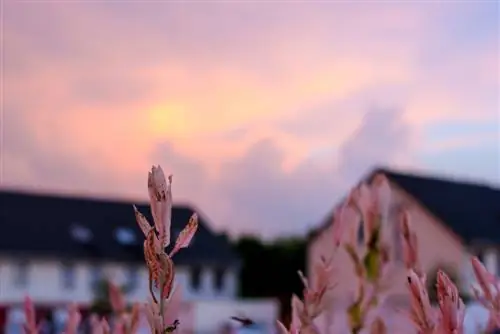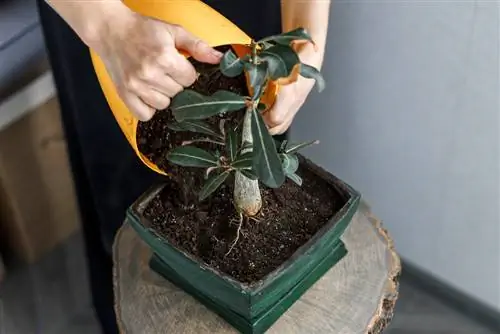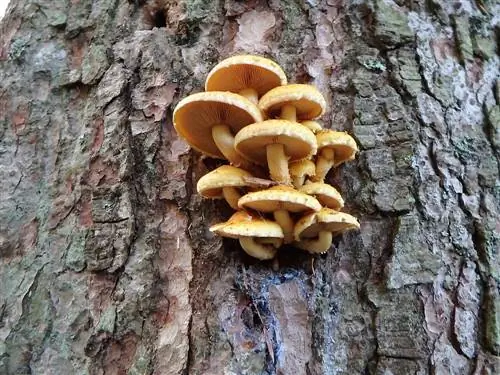- Author admin [email protected].
- Public 2023-12-16 16:46.
- Last modified 2025-01-23 11:21.
A large part of the German forests consists of pine trees. With the partly two-colored trunks, the gracefully shaped crown and the wonderful smell of pine needles, many people can no longer imagine life without the conifer. In addition, the pine also brings a large yield to the forestry industry. But more and more mushrooms are also enjoying the pine tree - to the chagrin of conservationists. Once the pests have established themselves in the pine tree, you need to act quickly to contain the spread. This article will inform you about the most common types of fungus, the main symptoms and useful measures to combat them.
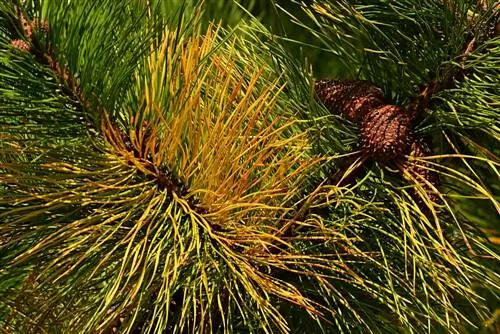
Which fungi attack pine trees and how do you fight them?
A fungal infection in pine trees can be caused by Sphaeropsis sapinea (shoot dieback), Cenangium ferruginosum (shoot loss) or Lophodermium seditiosum (pine shoots). Common symptoms include dead buds, shoot distortion, brownish needles and resin leakage. To combat this, measures such as pruning, watering and pesticides are recommended.
The most common mushroom species
- Sphaeropsis sapinea (pine shoot dieback)
- Cenangium ferruginosum (pine shoot dwindling)
- Lophodermium seditiosum (Pine Shoot)
Symptoms
The fungus species mentioned above, which primarily target the pine trees, all cause similar symptoms. However, in order to choose an effective treatment method, it is important to analyze the exact disease.
Instinct death
- dead buds
- Instinct distortions
- dark fruiting bodies
- increased resin discharge
- brown needles
- wood blue
Dwindling instincts
- brown needles
- The needles fall off
- black fruiting bodies, yellowish when wet
- Death of entire branches
- When cutting cold cuts, the diseased wood can be clearly separated from the he althy tissue
Pine Shake
- initially yellowish discoloration of the needles, later red-brown
- strong needle shedding
Treat
Instinct death
- ensure low humidity
- water frequently
- Pruning affected branches
Dwindling instincts
- water frequently
- Control of the pine needle gall midge
Pine Shake
- remove brown needles
- Plant protection products
Endangered Pines
Basically any pine tree can suffer from a fungal infection. The following are particularly susceptible to pine shedding:
- the Scots pine
- the mountain pine
- the stone pine
- and the black pine
The fungi are often introduced by parasites (in the case of shoot loss caused by the pine needle sheath gall midge). To do this, the pests use wounded areas in the bark to penetrate inside the tree and lay their eggs there. A key factor that promotes fungal infestation is dry summers.
Spread of fungi
If you notice the symptoms of a fungal infection on your jaw, you should act quickly to prevent the fungus from spreading. Affected tree parts must be removed immediately and carefully. Also inform the local forestry office about your findings. The small fruiting bodies often sit on the bark, needles or cones of the pine tree. By being washed away by the rain, they reach the roots of other trees.

